Balthus (1908 – 2001)
Get a Balthus (1908 – 2001) Certificate of Authenticity for your painting (COA) for your Balthus (1908 – 2001) drawing.
For all your Balthus (1908 – 2001) artworks you need a Certificate of Authenticity (COA) in order to sell, to insure or to donate for a tax deduction.
Getting a Balthus (1908 – 2001) Certificate of Authenticity (COA) is easy. Just send us photos and dimensions and tell us what you know about the origin or history of your Balthus (1908 – 2001) painting or drawing.
If you want to sell your Balthus (1908 – 2001) painting or drawing use our selling services. We offer Balthus (1908 – 2001) selling help, selling advice, private treaty sales and full brokerage.
We have been authenticating Balthus (1908 – 2001) and issuing certificates of authenticity since 2002. We are recognized Balthus (1908 – 2001) experts and Balthus (1908 – 2001) certified appraisers. We issue COAs and appraisals for all Balthus (1908 – 2001) artworks.
Our Balthus (1908 – 2001) paintings and drawings authentications are accepted and respected worldwide.
Each COA is backed by in-depth research and analysis authentication reports.
The Balthus (1908 – 2001) certificates of authenticity we issue are based on solid, reliable and fully referenced art investigations, authentication research, analytical work and forensic studies.
We are available to examine your Balthus (1908 – 2001) painting or drawing anywhere in the world.
You will generally receive your certificates of authenticity and authentication report within two weeks. Some complicated cases with difficult to research Balthus (1908 – 2001) paintings or drawings take longer.
Our clients include Balthus (1908 – 2001) collectors, investors, tax authorities, insurance adjusters, appraisers, valuers, auctioneers, Federal agencies and many law firms.
We perform Balthus art authentication, appraisal, certificates of authenticity (COA), analysis, research, scientific tests, full art authentications. We will help you sell your Balthus or we will sell it for you.
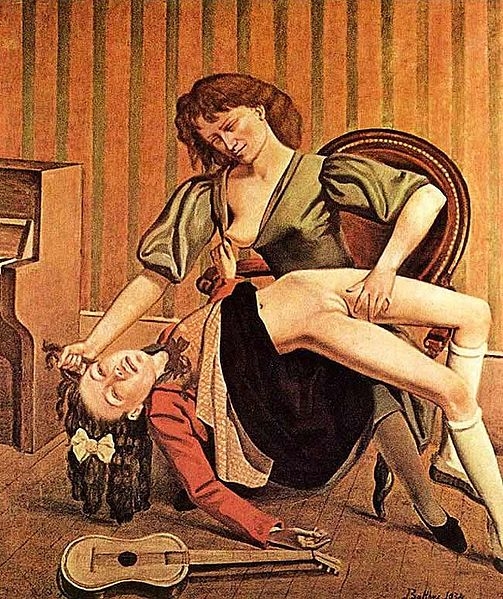
Guitar Lesson
Oil on canvas 63.5 x 54.5 in
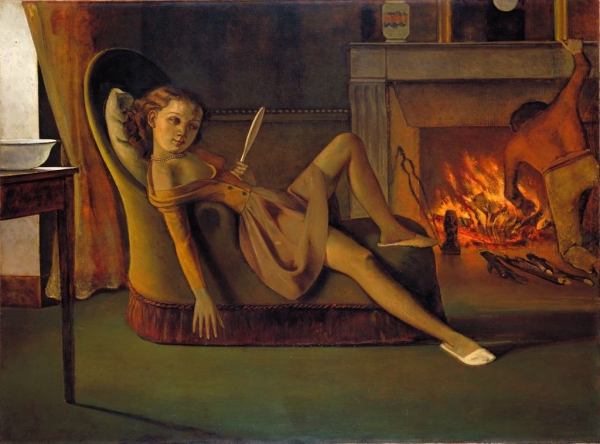
The Golden Days
1944 Oil on Canvas
Hirshhorn Museum
Balthus was a Polish-French artist, who created controversy in the modern art world. In his lifetime, Balthus refused to send biographical information to museums, claiming his audience should focus on his work and not his personal life.
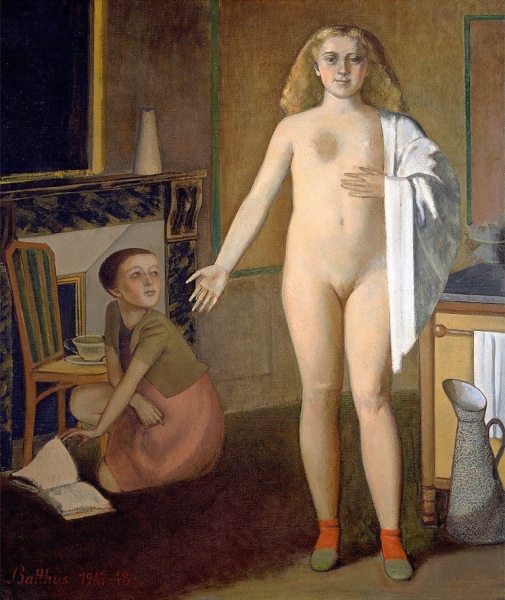
The Room
1947 Oil on canvas
Hirshhorn Museum
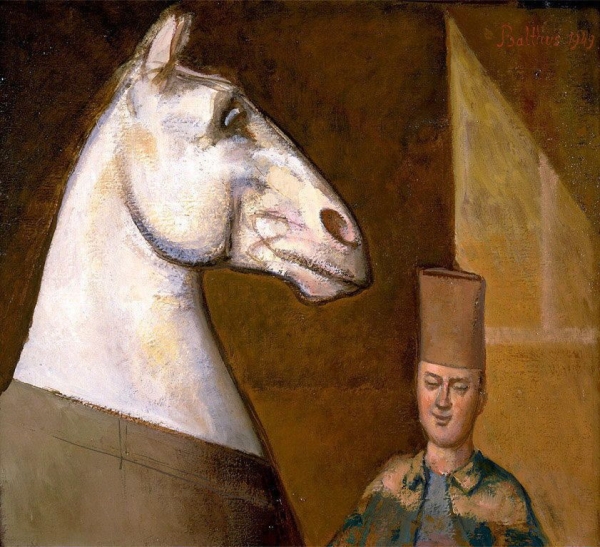
Moroccan Horseman and his Horse
1949 Oil on Canvas
Hirshhorn Museum
As a young artist, Balthus was sponsored by Henri Matisse, Pierre Bonnard, Rainer Maria Rilke and Maurice Denis. Some of his earliest work includes a series of illustrations for the book Mitsou, featuring a boy and cat. The image of a cat later became a repeated theme in Balthus’s work.
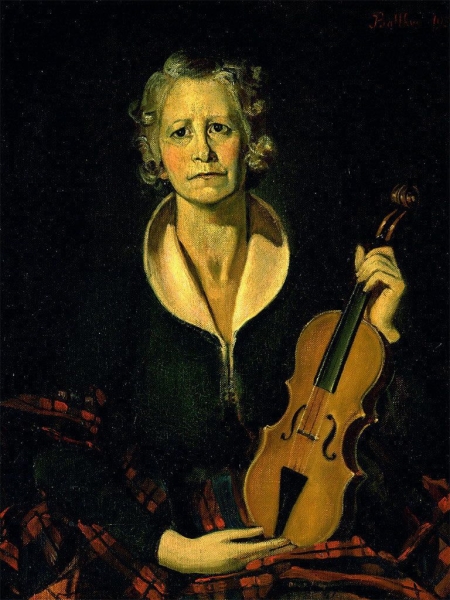
Woman with Violin
1936 Oil on Burlap 81 x 65.4 cm
In 1926 Balthus travelled to Italy, where he studied the work of Piero della Francesca and copied his frescoes in Florence. This study later informed paintings Balthus created for a Protestant church in Beatenberg, Switzerland.
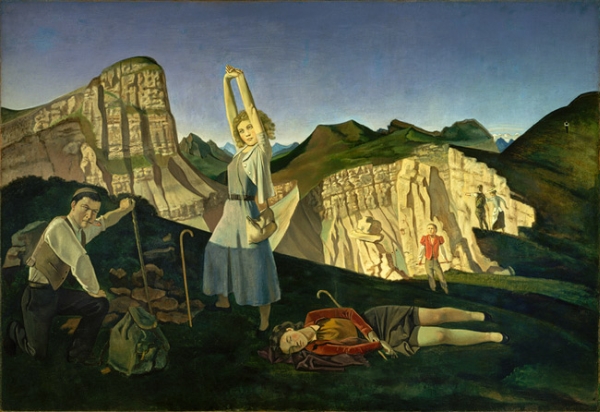
The Mountain
1936 Oil on Canvas
Metropolitan Museum of Art, New York

Nude Before a Mirror
1955 Oil on Canvas
Metropolitan Museum of Art, New York
In 1930 Balthus was drafted into the Moroccan infantry in Kenitra and Fes, where he worked as a secretary. After two years in Morocco, Balthus moved to Paris and opened a painting studio. Balthus started painting his controversial paintings of young nudes in exotic situations.
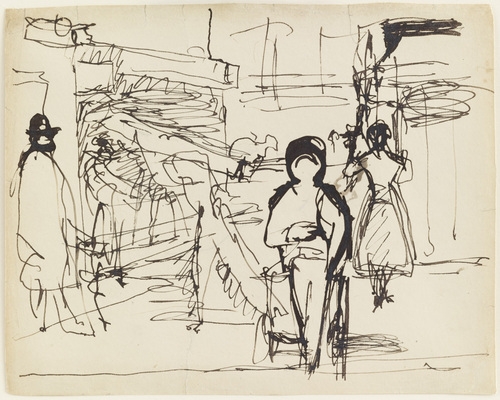
Study for the Street
1929 Ink on Paper
Museum of Modern Art, New York
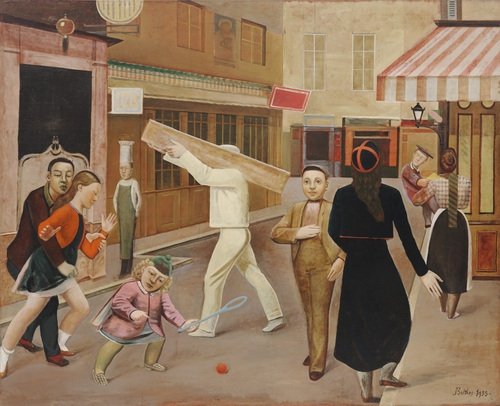
The Street
1933 Oil on Canvas
Museum of Modern Art, New York
In 1937 Balthus married Antoinette de Watteville, a model and aristocrat from Bern. The couple remained in Paris and had two children together. Outside of his family, Balthus associated with well-known artists and writers such as, Man Ray, Alberto Giacometti, Joan Miró, Albert Camus, Pierre Jean Jouve and Joseph Breitbach. His work was highly regarded Picasso, who spoke positively about Balthus’s daring paintings.
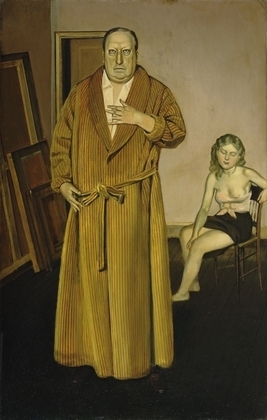
André Derain
1936 Oil on Wood
Museum of Modern Art, New York
In 1940 Balthus and his family escaped the German invasion in Paris, and hid away on a farm in Champroyent. A few years later they moved to Switzerland, living in Bern and Geneva. Balthus remained in Switzerland until 1946, at which time he returned to France. At this time Balthus spent less time in Paris, and frequented locations in southern France such as Aix-en-Provence and the Morvan.
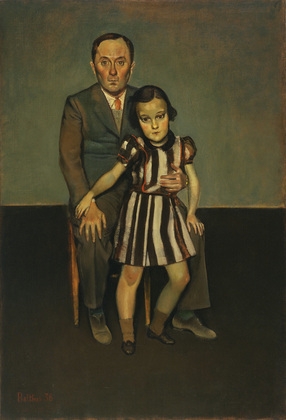
Joan Miró and His Daughter
1937 Oil on Canvas
By the 1950s Balthus had an international reputation and a major exhibition at the Museum of Modern Art in New York. It was in New York that Balthus refused to release personal information, creating an air of mystery around his paintings. Balthus continued to move around Europe during the 1960s and 70s, living in Rome for a while before spending another period of time in Switzerland. On a trip to Japan, Balthus met his second wife, Setsuko, who followed Balthus to Rosiniere, Switzerland. When Balthus died his funeral was attended by a variety of celebrities, ranging from political leaders to popular musicians.
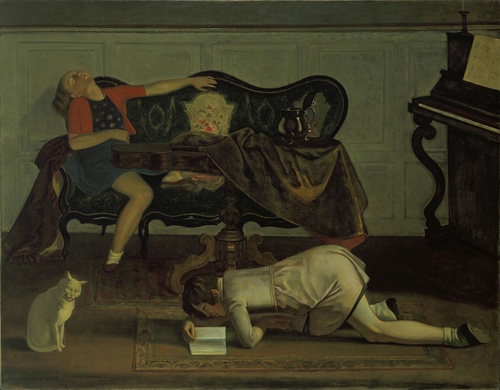
The Living Room
1942 Oil on Canvas
Museum of Modern Art, New York
The work of Bathus has continued to inspire artists, poets and musicians. He was one of the few, living artists to have a painting in the collection of the Louvre. The work of Balthus is now in major collections around the world. Do you think you own a painting by Balthus? Contact us. We are the Balthus experts.
